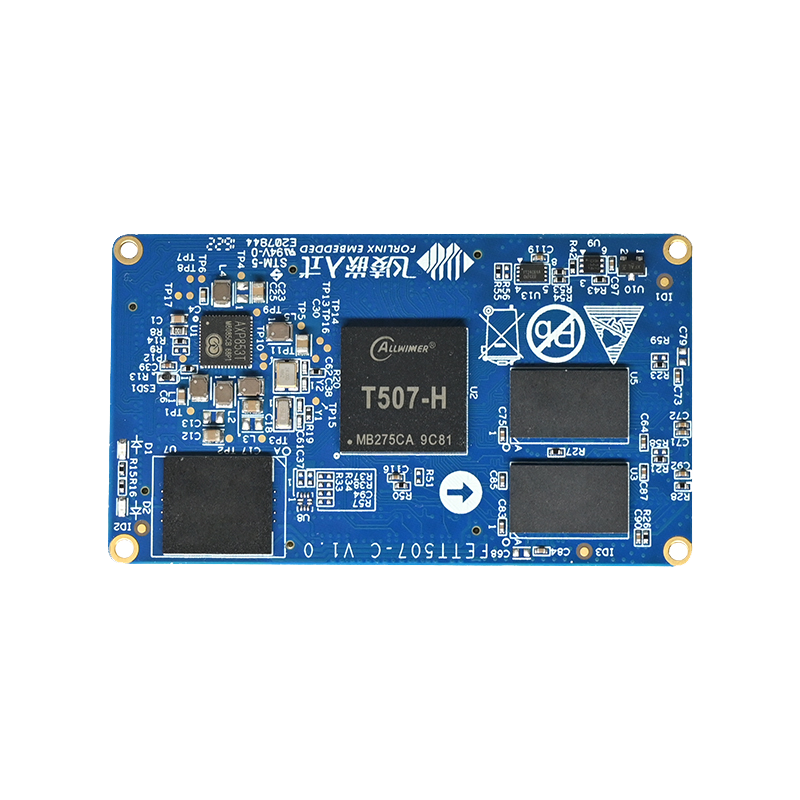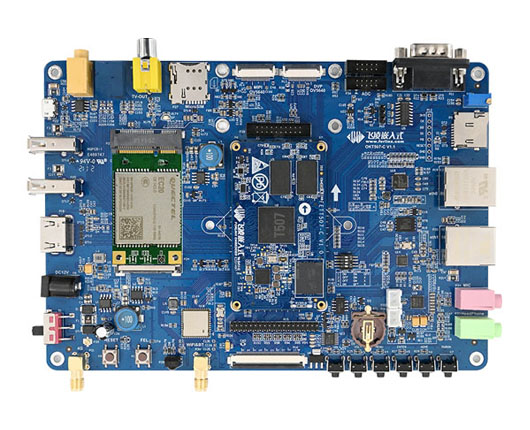
Allwinner T507 Audio System: DMA Channel, Audio Hub Configuration and Test Guide
This guide provides a concise overview of the audio system on the Allwinner T507 platform, covering the DMA transfer mechanism, Audio Hub configuration methods, and commonly used audio testing tools. It is intended to help developers quickly set up and validate audio functionality.
When a DMA channel sound card records or plays digital audio, it uses the DMA channel to transfer audio data between itself and RAM without CPU intervention to improve the data transfer rate and CPU utilization.
T507 Audio System
Audio codec, Audio Hub, DMIC, OWA(One Wire Audio)
Audio codec: Built-in module with digital-to-analog conversion to convert audio digital signals to analog signals.
Audio Hub: T507-specific module integrates basic audio input and output functions and special hardware mixing functions. The mixing function has three input terminals and 4 x I2S, which can complete the mixing of three channels of data. The mixed data is output through HDMI, I2S0, I2S2 and I2S3.
Audio Path Configuration
To view the current audio device node on the system:
root@forlinx:/# cat /proc/asound/cards
0 [audiocodec ]: audiocodec - audiocodec //codec corresponding card0
audiocodec
1 [sndahub ]: sndahub - sndahub //audio_hub corresponding card1
sndahub
2 [sndhdmi ]: sndhdmi - sndhdmi //hdmi corresponding card2
sndhdmi
3 [sndwm89603001a ]: sndwm8960_3-001 - sndwm8960.3-001a //8960 corresponding card3
sndwm8960.3-001a
root@forlinx:/proc/asound# cat devices
0: [ 0] : control //device 0
16: [ 0- 0]: digital audio playback
24: [ 0- 0]: digital audio capture
32: [ 1] : control //device 1
33: : timer
48: [ 1- 0]: digital audio playback //APBIF_TXDIF0 play hub_device 0
49: [ 1- 1]: digital audio playback //APBIF_TXDIF1 play hub_device 1
50: [ 1- 2]: digital audio playback //APBIF_TXDIF2 play hub_device 2
56: [ 1- 0]: digital audio capture //APBIF0 play hub_device 0
57: [ 1- 1]: digital audio capture //APBIF1 play hub_device 1
58: [ 1- 2]: digital audio capture //APBIF2 play hub_device 2
64: [ 2] : control //device 2
80: [ 2- 0]: digital audio playback
96: [ 3] : control //device 3
112: [ 3- 0]: digital audio playback
120: [ 3- 0]: digital audio capture
Audio_hub Default Configuration
Default i2s3 configuration
root@forlinx:/# tinymix -D 1 Mixer name: 'sndahub' Number of controls: 26 ctl type num name value 0 ENUM 1 ahub audio format Function null 1 BOOL 1 I2S0IN Switch Off 2 BOOL 1 I2S0OUT Switch Off 3 BOOL 1 I2S1IN Switch Off 4 BOOL 1 I2S1OUT Switch On 5 BOOL 1 I2S2IN Switch Off 6 BOOL 1 I2S2OUT Switch Off 7 BOOL 1 I2S3IN Switch On 8 BOOL 1 I2S3OUT Switch On 9 BOOL 1 DAM0IN Switch Off 10 BOOL 1 DAM1IN Switch Off 11 BOOL 1 DAM0OUT Switch Off 12 BOOL 1 DAM1OUT Switch Off 13 ENUM 1 APBIF0 Src Select NONE 14 ENUM 1 APBIF1 Src Select I2S3_TXDIF 15 ENUM 1 APBIF2 Src Select NONE 16 ENUM 1 I2S0 Src Select NONE 17 ENUM 1 I2S1 Src Select APBIF_TXDIF0 18 ENUM 1 I2S2 Src Select NONE 19 ENUM 1 I2S3 Src Select APBIF_TXDIF1 20 ENUM 1 DAM0Chan0 Src Select NONE 21 ENUM 1 DAM0Chan1 Src Select NONE 22 ENUM 1 DAM0Chan2 Src Select NONE 23 ENUM 1 DAM1Chan0 Src Select NONE 24 ENUM 1 DAM1Chan1 Src Select NONE 25 ENUM 1 DAM1Chan2 Src Select NONE
I2s0 Recommended Configuration
tinymix -D 1 1 1 //Open input for i2s0 tinymix -D 1 2 1 //Open output for i2s0 tinymix -D 1 7 0 //Close i2s3 input tinymix -D 1 8 0 //Close i2s3 output tinymix -D 1 14 I2S0_TXDIF tinymix -D 1 16 APBIF_TXDIF1 tinymix -D 1 19 NONE
I2s2 Recommended Configuration
tinymix -D 1 1 1 //Open input for i2s2 tinymix -D 1 6 1 //Open output for i2s0 tinymix -D 1 7 0 //Close i2s3 input tinymix -D 1 8 0 //Close i2s3 output tinymix -D 1 14 I2S2_TXDIF tinymix -D 1 18 APBIF_TXDIF1 tinymix -D 1 19 NONE
The configuration of audio channels will affect the use of test routines:
Before conducting the playback test, please insert the prepared 3.5mm headphones into the HeadPhone interface. To play sound through the speaker, insert the pin wires of the prepared speaker (SPK_RP and SPK_LN) into the P32 or P31 interface.
Introduction to Testing Tools
1. alsa - utils: These are standard ALSA tools that utilize the alsa - lib standard library. Commonly used tools include amixer, aplay, arecord, alsaconf, etc.
2. tinyalsa: It is a simplified version of alsa - lib. It provides basic interfaces for PCM and control, and the interfaces can be used as needed. Commonly used tools are tinymix, tinyplay, tinycap.
T507 Audio Test Tool
The alsa-utils standard ALSA tool uses the alsa-lib standard library. Commonly used are amixer, aplay, arecord, alsaconf
tinyalsa is a simplified version of alsa-lib. It provides the basic interfaces for PCM and control, which can be used on demand. Commonly used tools are tinymix, tinyplay, tinycap1
1. codec (LINEOUT)
only DAC, no ADC. Therefore, it can only play, not record, and audio _ hub is not used.Play commands use aplay or tinyplay
aplay -Dhw:0,0 mic.wav
2. For the 8960 (external audio chip), its I2S signal passes through the audio_hub, which is a module unique to Allwinner. Audio recording using this.
Audio_hub (with the 8960):
root@forlinx:tinycap_ahub mic.wav -aD 1 -ad 1 -D 3 -d 0 -t 30 -b 16 -c 2 -p 1024 Usage: tinycap_ahub file.wav [-aD ahub card] [-ad ahub device] [-D card] [-d device][-c channels] [-r rate] [-b bits] [-p period_size] [-n n_periods] [-t seconds]
Audio_hub play (8960):
root@forlinx:tinyplay_ahub mic.wav -aD 1 -ad 1 -D 3 Usage: tinyplay_ahub file.wav [-aD ahub card] [-ad ahub device] [-D card] [-d device] [-p period_size] [-n n_periods]



